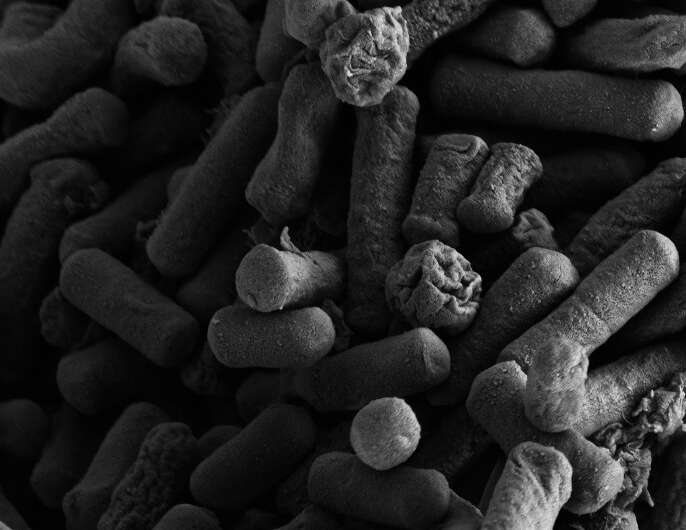Whole genome sequencing benefits for surveillance of bacteria behind gastroenteritis

A new study into one of the UK's leading causes of gastroenteritis has shown how whole genome sequencing can improve its surveillance and control of the disease.
Clostridium perfringens bacteria are responsible for an estimated 80,000 cases of diarrhoea in the UK each year either from food poisoning or from non-foodborne nosocomial origin. For most, the symptoms are unpleasant but normally clear up within 24 hours. However, in very rare cases, C. perfringens infection can develop into more severe forms. For vulnerable groups such as the elderly living in care homes, a more longer-lasting debilitating chronic infection may occur that in rare cases can be fatal.
To help combat this problem, we need more information about how these bacteria spread and infect people. Researchers at the Quadram Institute have worked with Public Health England to analyze C. perfringens foodborne and non-foodborne outbreaks over a 7-year period in England and Wales. Working with colleagues at the University of Cambridge, they have used whole genome sequencing to carry out a detailed analysis of the bacterial strains associated with causing human gastroenteritis.
109 samples of C. perfringens isolated from disease cases or foods suspected of causing infections in England and Wales between 2011 and 2017 had their whole genome sequenced. This allowed an analysis of the genes present that are responsible for toxin production, as well as related characteristics that aid infection, such as antimicrobial resistance. Importantly, comparative analysis of the different genomes lets the researchers see how related the different strains are, which is a key way of tracing where they may have come from.
The team, publishing in the journal Microbial Genomics, found that nine distinct outbreaks associated with care homes in North East England over a period of five years were caused by very closely related
strains of C. perfringens. This indicates a potential common source linking them, although the exact source cannot be pinpointed after the event.
Using whole genome sequencing for routine surveillance, especially in places such as care homes where vulnerable people need protection could be crucial in preventing future outbreak spread and in rapidly pinpointing the sources of contamination.
As well as monitoring for outbreaks, wider surveillance could provide vital data from diverse sources that will help researchers understand more about the bacteria, how they survive and why they cause disease.
"This is an exciting study that highlights the strength of collaborations between academic institutions like Quadram Institute and public health authorities like Public Health England, and how cutting-edge approaches can be used profile and track important food poisoning-associated bacteria" said Dr. Lindsay Hall from the Quadram Institute.
"We hope to use the information generated to identify potential strains of Clostridium perfringens that may be associated with outbreaks so that we can in the future develop intervention strategies to try and prevent spread."
The researchers were supported by funding from the Biotechnology and Biological Sciences Research Council, the Wellcome Trust and the Food Standards Agency.
The data obtained in this study have shown that the genes that encode the key toxin responsible for causing gastroenteritis aren't limited to the bacterial chromosome but may also be carried on virulence plasmids that can be transferred around bacteria.
Further data will deliver more knowledge of how the virulence factors are spread and will help identify reservoirs of persistent bacteria. This will help improve intervention strategies and ways of preventing outbreaks and infections and ultimately protect vulnerable communities.
More information: Raymond Kiu et al. Phylogenomic analysis of gastroenteritis-associated Clostridium perfringens in England and Wales over a 7-year period indicates distribution of clonal toxigenic strains in multiple outbreaks and extensive involvement of enterotoxin-encoding (CPE) plasmids, Microbial Genomics (2019). DOI: 10.1099/mgen.0.000297
Provided by Quadram Institute

















